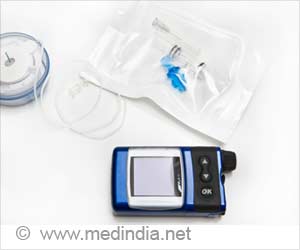Gestational diabetes, which is a common complication during pregnancy, affects approximately 6-7% of pregnant women.

Gestational diabetes mellitus (GDM) is believed to be caused by increased levels of human placental lactogen, estrogen, cortisol, prolactin, and progesterone. GDM is linked to several adverse birth outcomes such as preeclampsia, macrosomia, birth injury, and cesarean delivery. Because of the possible negative effects, screening for GDM is an important component of prenatal care.
Representing approximately 3.3% of all live births in the United States, twin pregnancies present unique medical challenges; however, most of the available data regarding GDM testing thresholds are based on singleton pregnancies. Since carrying twins amplifies the normal physical changes that accompany pregnancy, a team of researchers from the Icahn School of Medicine at Mount Sinai and the New York University School of Medicine set out to pinpoint the most effective screening cutoff for women pregnant with twins.
Currently, the American Congress of Obstetricians and Gynecologists advocates a two-step diagnostic approach. Women are screened between 24-28 weeks, using a nonfasting 1-hour 50-g glucose challenge test (GCT). If a patient exceeds the recommended cutoff (between ≥130 mg/dL and ≥140 mg/dL), additional testing is performed to diagnose or rule out GDM.
In this study, doctors analyzed data from 475 women pregnant with twins who were treated at their hospitals between 2005 and 2013. Specifically, they focused on three potential cutoff thresholds for the GCT: ≥130 mg/dL, ≥135 mg/dL, and ≥140 mg/dL. The investigators found that the optimal cutoff for the 1-hour 50-g GCT screening was ≥135 mg/dL. The data revealed that the 130 mg/dL cutoff did not show any additional predictive value, yet increased the test positive rate. The 140 mg/dL cutoff would have failed to identify 6.5% of patients with GDM.
"With the increasing prevalence of twin pregnancies, understanding how to better screen for GDM is important in this population because of the unique circumstances that may put this group at increased risk for development of insulin resistance, as well as their altered physiology, which would limit the ability to extrapolate from data derived from singleton pregnancies," says investigator Nathan S. Fox, MD, Associate Clinical Professor, Obstetrics, Gynecology and Reproductive Science, Icahn School of Medicine at Mount Sinai. "We found that the optimal GCT cutoff appears to be ≥ 135 mg/dL. This cutoff yielded 100% sensitivity with only a 28.6% test positive rate."
Advertisement
For now, this study represents an important first step in addressing the distinctive differences between GDM in twin and singleton pregnancies, but more research is needed to fully develop guidelines to better serve mothers carrying twins. "There is much more to learn regarding GDM in twin pregnancies that could be addressed with future prospective studies," concludes Dr. Fox. "More research is needed in twin pregnancies to confirm this finding in other populations, as well as to establish the optimal GDM screening and treatment paradigm in twin pregnancies."
Advertisement














